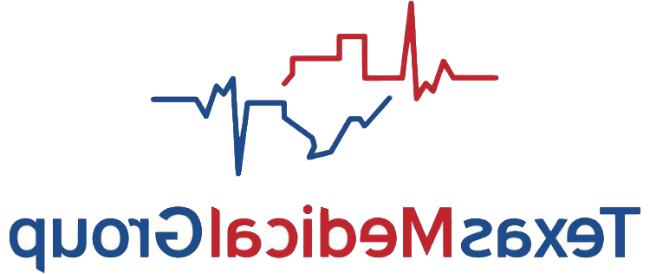
Altering documentation in patient records can have serious consequences, including allegations of fraud and professional misconduct — and it also can make malpractice claims difficult to defend. Yet, mistakes happen and situations undoubtedly will occur that require healthcare providers to make corrections, addendums, or late entries in patient records.
Because the majority of healthcare organizations have transitioned to electronic health records (EHRs), policies and procedures for amending records should reflect that change. In principle, many of the same standards for modifying paper records apply to EHRs, such as not obscuring the original documentation, making timely corrections, and signing all entries. What differs in EHRs is the interface (including how the information is displayed and recorded) as well as the ability of the system to track user actions through metadata and audit trails.
With the unique aspects of EHRs in mind, healthcare organizations can take steps to ensure a consistent approach to record amendments and reduce undue risks associated with altered documentation. Important considerations include:
- Devising and documenting a clear process for amending patient records as part of the organization’s overall documentation policies and procedures. This process will help guide providers and staff members in a standardized approach to making corrections.
- Making sure your organizational policies for revising patient records comply with federal and state laws. Some states may have specific regulations related to record amendments.
- Specifying in your record amendment policy the precise information that should be included when a correction, addendum, or late entry is made, such as (a) the date and time of the revision, (b) the name of the person making the revision, (c) a clear explanation of what information was changed, and (d) the rationale for the modification.
- Developing a process for managing patient-requested changes to health records. Under HIPAA, patients have the right to request changes to their records if they believe the records contain incorrect, incomplete, or inconsistent information.1 Healthcare organizations should have a policy and process for assessing and responding to these requests within the HIPAA-specified timeframe.
- Determining whether your EHR system has a specific process or workflow for corrections, addendums, or late entries in records. Can the system track any modifications made to records after the original entries?
- Ensuring that corrections, addendums, and late entries do not overwrite the original content, and that the original information is easily accessible.
- Verifying that your EHR system has a way to clearly indicate or “flag” which records have been revised.
- Requiring notification to the original author of the content about the correction, addendum, or late entry so he/she can verify that the amendment is necessary (if the person making the revision is not the same person who authored the original content).
- Ensuring that, if an amendment is not within the same record entry as the original content, the original content also clearly notes that an amendment exists and how the user can locate it.
- Specifying in your record amendment policy the appropriate timeframe for making corrections, addendums, and late entries. Delays in revisions might diminish the credibility of the changes.
- Prohibiting providers and staff members from amending patient records that have been requested by an attorney or government agency or are associated with a pending or ongoing malpractice lawsuit.
- Ensuring that your record amendment policy strictly prohibits falsifying information in patient records, such as changing dates, deleting content, or adding nonfactual information.
- Educating providers and staff members about documentation amendment procedures and the possible consequences of deliberate or inadvertent record falsification. Make sure providers and staff members are aware of how the EHR system works and the types of information that metadata and audit trails will capture.
- Routinely auditing corrections, addendums, and late entries in the EHR to ensure that providers and staff are complying with organizational documentation policies.2
To further assess your organization’s policies related to EHR documentation, use MedPro’s Electronic Documentation checklist.
Endnotes
1 45 CFR § 164.526
2 Centers for Medicare & Medicaid Services. (2021). Chapter 3: Verifying potential errors and taking corrective actions. In Medicare Program Integrity Manual (Publication No. 100-08). Retrieved from http://www.cms.gov/Regulations-and-Guidance/Guidance/Manuals/Internet-Only-Manuals-IOMs-Items/CMS019033; Samaritan, G. (2013, May 29). Correcting EHR errors without getting in trouble. Medscape. Retrieved from www.medscape.com/viewarticle/804731; American Health Information Management Association. (2012). Amendments in the electronic health record: Toolkit. HIM Body of Knowledge. Retrieved from http://bok.ahima.org/; Heath, S. (2019, December 2). Understanding patient requests for EHR corrections, changes. Patient Engagement HIT. Retrieved from http://patientengagementhit.com/news/understanding-patient-requests-for-ehr-corrections-changes
This document does not constitute legal or medical advice and should not be construed as rules or establishing a standard of care. Because the facts applicable to your situation may vary, or the laws applicable in your jurisdiction may differ, please contact your attorney or other professional advisors if you have any questions related to your legal or medical obligations or rights, state or federal laws, contract interpretation, or other legal questions.
MedPro Group is the marketing name used to refer to the insurance operations of The Medical Protective Company, Princeton Insurance Company, PLICO, Inc. and MedPro RRG Risk Retention Group. All insurance products are underwritten and administered by these and other Berkshire Hathaway affiliates, including National Fire & Marine Insurance Company. Product availability is based upon business and/or regulatory approval and may differ among companies.
© 2022 MedPro Group Inc. All rights reserved.

Discussion
There are no comments yet.